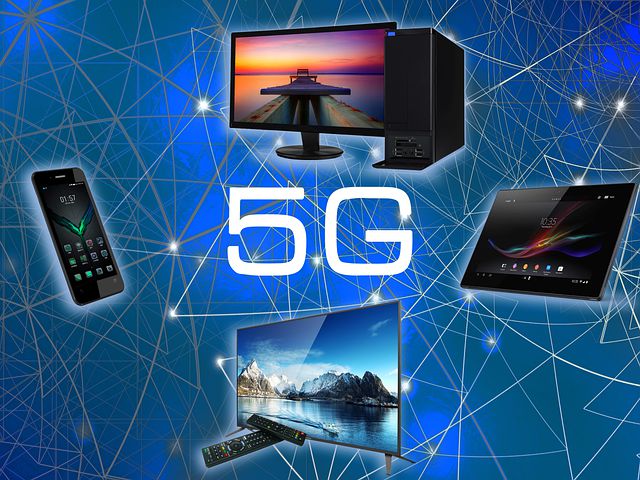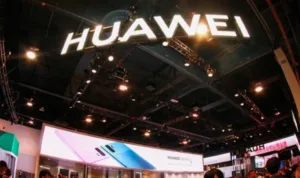There is an old saying in the technology mind space that any hardware that can be replaced by software, will be. It’s an observable fact in technology evolution…

Now, faced with the quandary of just exactly how to stop the China-based Huawei 5G network hardware platform from taking over the world, experts in the US are turning to software systems to help replace those pesky (efficient, and darn cheap) components that some say have an open back door to global spying.
 Image:Pixabay
Image:Pixabay
Think of it, once written, software code can be replicated virtually free, and iterated ‘ad infinitum’. Hardware (made of hard stuff) must be produced and replicated at a hard cost. Examples of this abound, in displays, sensors, and even content media. (Think of digital streaming versus VCR’s DVD’s and the Blu-ray disks of yesteryear).
Huawei booth at CES 2020, nothing for sale in USA at this international trade show, Source: company
As the battle for the hearts and minds of global 5G wireless build-out continues, a new software-focused approach is being targeted to help circumvent the Huawei juggernaut. Along with telecom-focused AT&T, Nokia, and Ericsson, cloud-based companies including Microsoft and Dell are being recruited to move toward a software-heavy approach to deliver 5G, perhaps much sooner than the technology evolution norm.
What’s changed is that 5G is “finally bringing IT into the telecom market”, according to Travis Russell, Director, Cybersecurity, Oracle Communications; chairman, working group 3, FCC communications security, reliability, and interoperability council, who participated in a 2019 Center for Strategic International Studies roundtable discussion in February of that year.
We are finally bringing IT into the telecom market. And in fact, if you look at, you know, SS7 and Diameter and SIP, all of the technologies that we have been using for decades, all of that got thrown out with 5G. And it’s truly cloud-based, software-based data centers instead of central offices. That’s the 5G network of the future.
Don’t get me wrong, anything the Chinese are capable of doing, is most probably already being done by the West, (and most likely originated here…) There just seems to be some sort of major concern that it’s China, not MI5, SIS, CIA, NSA, etc. doing the looking. (…and, that’s a topic well beyond the scope of this space.)
Truth be told, 5G technology and the RAN market (short for radio access network for wireless infrastructure) is booming and being well pushed by the move to 5G and the “internet of everything” initiative that the technology promises to empower.
For example Dell’Oro Group in February 2020 reported (pre-Covid-19) improving market sentiment for 5G wireless equipment, calling it “…enough to offset reduced demand for LTE, propelling the overall RAN market to a second year of healthy growth,” according to Stefan Pongratz, vice president with with the marketing firm, who characterized the roll out in 2019 as “accellerating at a torrid pace throughout 2019”. He said,
“While the overall RAN results in the quarter were in line with expectations, 5G wireless RAN activity surprised on the upside, underpinning projections that the rollout of 5G wireless networks is accelerating… [and] We remain optimistic these trends will extend into 2020, propelling the overall RAN market to advance for a third consecutive year
Other Dell’Oro 5G conclusions include:
- 5G NR macro and small cell transceiver shipments “Massive MIMO (multiple-input and multiple-output) plus Non-Massive MIMO for sub-6GHz and millimeter macros and small cells “ surpassed 35 M in 2019
- The overall 5G NR transceiver installed base is projected to eclipse 0.1 billion by 2020.
- Positive developments in the North America and Asia Pacific regions are expected to extend into 2020 and drive the lion share of the growth.
What’s all the fuss about?
Beyond the intense pressure created in world-wide marketing of its technology Huawei is also facing several breaches of US trade and patent infringement law plus breaches of WTO sanctions that include bank fraud, technology transfers (to Iran, N. Korea and others). Here’s a link to the specifics, covered by Reuters.
Here’s a quote from the original 2012 report from the The US house intelligence committee that started the concern over Huawei’s potential influence from it’s Chinese government partners:
Neither company [Huewei or ZTE] was willing to provide sufficient evidence to ameliorate the Committee’s concerns,” the committee wrote in its report. “Neither company was forthcoming with detailed information about its formal relationships or regulatory interaction with Chinese authorities. Neither company provided specific details about the precise role of each company’s Chinese Communist Party Committee”.
So the silver lining in moving past well established 5G protocol based on world wide patents from Huawei, is that overall 5G security protocols are being shifted to an IT cloud-based approach that may allow us to move support technology infrastructure to software much sooner than initially expected. It may just turn out that life in the 5G fast lane (literally with support for self-piloted vehicles in the wings) is getting safer, even as time and other efficiency metrics improve. “…then I think to myself what a wonderful world, oh yeah…” Stephen Sechrist

